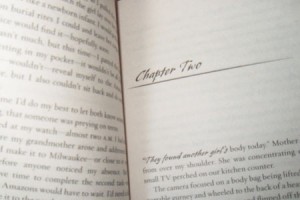Article Two in How to Write a Scene, Scene Structure: Goal, Conflict, Disaster by Lori Devoti, a How To Write Fiction Series.
Goal, Conflict, Disaster is the basic scene structure of every good scene and yes, this means every scene should have these three elements, starting with a POV character’s GOAL.
“Great!” you say. “Easy enough, I’ll give my character a headache….there you go, she wants an aspirin. Now off to writing whatever I want.”
Uh no. (And so you know, this is an actual real-life example of what I have heard one writer say.)
The goal can’t be any old goal. It has to be important to the character AND the story. It has to relate to the story goal.

Story Goal is basically the purpose of your book–what the main character wants to accomplish. The story question is simply the question raised in the reader’s mind upon understanding this goal.
EXAMPLE:
Story Goal Mystery Novel – To find the killer before he kills again.
Story Question – Will our hero find the killer before he kills again?
These are story goals and questions at their simplest.
So, unless that aspirin has the DNA of our killer on it and thus is a step to our character’s story goal, it isn’t tied enough to the story to be a scene goal. Try again!
Your POV character has a goal, next we need CONFLICT. I’m going to touch on this multiple times, but for now let’s just say someone or something needs to be getting in the way of your character reaching his/her scene goal. (Re-read that last bit…the conflict has to be regarding the scene goal.) This is the FACE-TO-FACE OPPOSITION that Swain mentions. And it needs to be face-to-face, we the reader need to see this opposition playing out on the page. This is the fun part. Show us! And before you ask, if the conflict is internal–man against himself, we don’t have a scene. We have a sequel. Sequels are fine and definitely have their place, but don’t confuse them with the all-mighty scene. (More on sequels later.)
And finally, at the end of our scene we need DISASTER. That’s right disaster. An engrossing book is not a book where everything goes right for the characters. An engrossing book is a book where exactly the opposite happens. Things need to go wrong and go wrong again. And despite what may seem as logical, disaster is what moves the story forward. If there is no disaster, if the character gets what they want, the story is over and just as bad, the character doesn’t have to change or grow. And again, in case you wondered, the disaster needs to involve stopping the character from reaching his scene goal, which is tied to the story goal. Disaster cuts off one easy route to the story goal and forces him to look for another…which leads to a new scene goal, new conflict and yes, another disaster.
EXAMPLE:
In Savannah Breeze by Mary Kay Andrews, the main character, BeBe, was taken in by a con man and lost everything. With nowhere else to go she is forced to move into the manager’s unit of a dive motel. In Chapter 16, she and her best friend, Weezie, are investigating the place.
In this scene Weezie is our narrator. Her GOAL is to get her friend settled, to make everything all right again. Her CONFLICT is Bebe herself and her resistance to accepting the place. Weezie’s DISASTER is discovering that things are far worse for BeBe than she imagined. Her friend lost not only her own money, but also her grandparent’s. Weezie can’t make everything all right for her friend, things are too far gone.
So, that’s it, right? Scenes are the building blocks of books. So, if you string together a bunch of scenes consisting of a GOAL, CONFLICT and DISASTER, you have a book.
Not quite. For fiction to really grab the reader there has to be more. There has to be an emotional connection between the character and the reader.
How do you get that? Check my other articles on this site for tips.

Question: Are motivation-reaction units the same as beats in a screenplay? In other words, when you get a certain number of beats in a screen play, you may have a scene. So, if you create enough motivation-reaction units will you also have a scene?
You can think of them as beats, but with a scene you want to have a beginning/middle/end and end on disaster or dilemma. However, that is for a complete scene. In a book you might actually break what is one complete scene into pieces as you switch back and forth between storylines/characters/etc. for dramatic effect.
If you read my 4 part article on scenes here that might help.
And this is one of those articles… Sorry, thought you were commenting on another article I wrote her on just motivation reaction units…